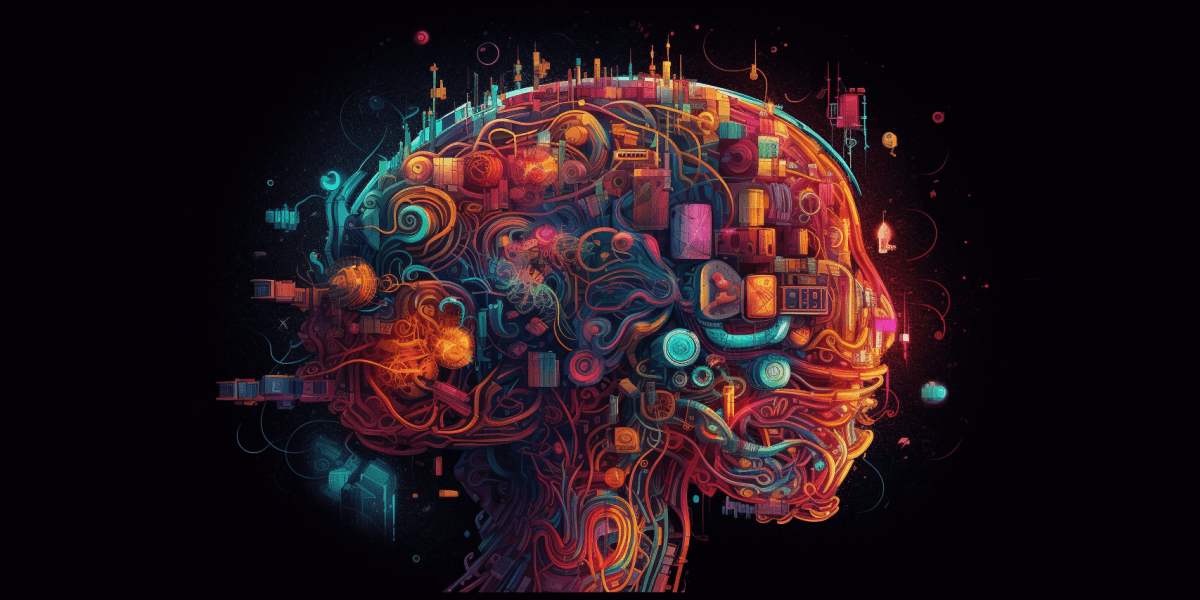In the realm of infrastructure development, healthcare expansion, and transportation innovation, the driving forces behind decision-making and project execution are undergoing a monumental transformation. We need AI Leadership. Traditional methods of planning, designing, and assessing the impact of new stadiums, hospitals, railways, and other community-beneficial projects are being redefined in the context of advanced technologies and societal expectations. This transformation is grounded in the philosophy articulated by Kevin Flynn, play by Jeff Bridges in the movie TRON Legacy, that the essence of perfection in systems remains an enigmatic pursuit due to its inherently unknowable nature. Yet, this pursuit propels us toward a future where the integration of Artificial Intelligence (AI) and digital innovation holds the promise of revolutionizing how we envision, create, and manage and lead projects.
As we stand on the brink of this new era, it’s evident that the traditional roles and methodologies employed by planners, engineers, and policymakers are set to evolve. No longer will these professionals merely engineer or design in the conventional sense; the arrival of General AI and advanced data analytics technologies means that these tasks can be accomplished with unprecedented speed and precision. The future, as it unfolds, will demand a shift towards curating the extensive data and complex models that these technologies provide. This new paradigm necessitates a reimagining of roles within the planning and development sectors, emphasizing the importance of systems engineering and software engineering expertise in crafting the advanced decision-making tools needed to navigate this complex landscape.
This article embarks on an exploration of seven pivotal shifts that will redefine the planning, development, delivery, and operation of projects across diverse sectors. From the democratization of investment decisions to the advent of automated project lifecycle adjustments and the digitalization of governance, these shifts promise a future where the alignment of community expectations, environmental stewardship, and cost efficiency is not just an ideal but a tangible reality. At the heart of this transformation lies not the technologies themselves but the AI leadership that dares to embrace and navigate the discomfort of relinquishing traditional protectionist approaches for a more open, transparent, and dynamic framework of project development.
In tracing the contours of this future, we confront the imperative for leaders to foster the conditions that will allow humanity to harness the full potential of General AI and digital tools. As we delve into these transformative shifts, let us consider how AI leadership, visionary in its outlook and courageous in its execution, will be the ultimate determinant in realizing a future where the development of our communities reflects the highest aspirations of efficiency, inclusivity, and sustainability.
The dawn of the AI era is upon us, radically transforming landscapes across planning and engineering sectors. Yet, at the heart of this seismic shift lies not the technology itself, but the leaders steering its course. This article delves into the evolving role of planners and engineers, the activities shaping their future, and the indispensable skills required to thrive in an AI-driven world.
- The Shift in Focus: Explore how AI is redirecting the focus of planners and engineers from traditional tasks to curating data, engaging communities, and integrating sustainable technologies.
- Future Activities Unveiled: From interpreting AI data models to managing interdisciplinary teams, discover the cutting-edge activities that will define the professional landscapes of planning and engineering.
- Skill Set Revolution: Unpack the comprehensive skill set essential for future success, including AI literacy, systems thinking, stakeholder communication, ethical judgment, adaptability, and more.
- Leadership at the Forefront: Leadership in the AI era goes beyond mere management; it’s about pioneering ethical, sustainable solutions that align with community interests. Learn what makes an effective AI leader in this transformative age.
- Challenges and Opportunities: With great power comes great responsibility. Dive into the challenges leaders face in this transition and the unprecedented opportunities that AI unlocks for creating resilient, inclusive, and adaptable communities.
What role do you see AI playing in the future of planning and engineering? Are we ready for the leadership challenges that come with it? Join the discussion and share your thoughts on preparing for a future where AI leads the way in shaping our built environment.
Table of Contents
- Transparency in Investment Decisions
- The Evolving Role of Planners and Engineers
- Predictive Modelling and Understanding Future Requirements
- Traceable Balance Between Community, Environment, and Cost
- Managing Change in Project Lifecycle
- Digital Transactions and Blockchain in Governance
- Integrated Digital Frameworks and Risk Management
- Conclusion: The Role of AI Leadership in Digital Transformation
Transparency in Investment Decisions
In an era where the scrutinizing eyes of taxpayers demand transparency and accountability more than ever before, the sector of investment decisions, particularly concerning public projects like defense, housing, and infrastructure, finds itself at a crucial juncture. Traditionally, the decision-making processes behind the allocation of resources and selection of project locales have been shrouded in bureaucratic opacity, often leaving communities in the dark about the rationale behind these pivotal decisions. This lack of transparency not only breeds distrust but also hampers the efficient allocation of resources, leading to suboptimal outcomes in project execution and community benefits.
One glaring example of this opacity can be seen in defense spending, where the complex matrix of geopolitical considerations, strategic needs, and technological advancements makes for a challenging puzzle. The decision to invest in one defense technology over another, or to locate a new base in a particular area, involves intricate calculations of risk, cost, and utility that are often not communicated effectively to the public. Similarly, in the housing sector, decisions regarding where and when to build new housing projects can sometimes seem arbitrary or politically motivated, leaving communities feeling marginalized or overlooked.
Enter the transformative potential of General Artificial Intelligence (GAI). GAI promises to revolutionize this landscape by introducing an unprecedented level of transparency and efficiency in investment decisions. By harnessing the power of advanced analytics and predictive modeling, GAI can provide a comprehensive overview of the potential impacts, costs, and benefits of different investment scenarios. This not only includes the immediate financial implications but also the long-term socio-economic impacts on communities.
For instance, in the realm of infrastructure development, GAI can simulate the effects of a new railway station’s location on local traffic patterns, economic development, and environmental sustainability. These simulations can run through countless scenarios considering future urban growth, evolving transportation needs, and potential climate change effects, providing a well-rounded view of the long-term implications of such an investment decision.
Moreover, GAI’s capabilities extend to the realm of risk allocation and stress testing, areas where historical policymaking and planning methodologies have often fallen short. By integrating vast datasets and employing sophisticated algorithms, GAI can predict potential challenges and stress points within proposed projects, allowing for dynamic risk allocation that adapts to changing conditions. This means that rather than using static, one-size-fits-all risk management approaches, projects can benefit from tailored strategies that optimize resource allocation and minimize potential disruptions.
In defense, GAI can evaluate the strategic effectiveness and resilience of different military installations under a range of threat scenarios, ensuring that investments are both tactically sound and cost-effective. In housing, it can identify the best locations for new developments by analyzing a multitude of factors including population trends, environmental risks, and existing infrastructure, thus ensuring that new housing projects meet long-term community needs.
| Objective | Description | Industry Example | Benefit |
|---|---|---|---|
| Enhanced Data Analysis | AI algorithms can process and analyze vast datasets more accurately and efficiently than human capabilities alone. | Financial Services: Goldman Sachs uses AI for more robust credit risk analysis, improving the accuracy of investment decisions. | Facilitates more informed investment decisions with a deeper understanding of potential risks and returns. |
| Real-Time Monitoring | Continuous, real-time monitoring of projects and investments for better oversight. | Construction: Skanska’s use of AI for real-time project data analysis reduces delays and cost overruns. | Identifies issues early, allowing for timely interventions that save resources. |
| Predictive Analytics | Leveraging historical data to forecast future trends and outcomes. | Energy: DeepMind’s partnership with Google to predict wind power output has significantly enhanced renewable energy management. | Improves resource allocation by anticipating future needs and potential bottlenecks. |
| Automated Reporting | Automatic generation of comprehensive reports detailing investment performance and impacts. | Healthcare: IBM Watson’s AI provides automated reporting in clinical trials, streamlining the data analysis process. | Reduces manual effort and time required for reporting, increasing efficiency and transparency. |
| Stakeholder Engagement | Using AI to better understand and engage with stakeholder preferences and concerns. | Retail: Starbucks uses AI to analyze customer preferences and feedback to improve product offerings and customer satisfaction. | Enhances stakeholder satisfaction by making investment decisions that are more closely aligned with their needs and expectations. |
Through these advances, AI is set to unlock new opportunities for making investment decisions more transparent, rational, and aligned with community and national interests. The future it heralds is one where decisions are not just explained post-factum but are understood and anticipated by all stakeholders involved, laying the groundwork for more inclusive, sustainable, and effective policy development and project implementation.
The Evolving Role of Planners and Engineers
The advent of Artificial Intelligence (AI) and digital transformation is not merely an addition to the toolkit of planners and engineers—it is a paradigm shift that necessitates a wholesale reevaluation of their roles within the ecosystem of development and infrastructure projects. As we steer towards this technologically advanced horizon, the traditional professions of planning and engineering are poised on the cusp of a seismic disruption, one that will fundamentally alter the way these professionals contribute to the conception, design, and implementation of projects.
At the heart of this disruption is the transition from manual, time-intensive processes to instant, data-driven decision-making facilitated by AI. The tasks that once defined the professions—drawing up blueprints, conducting feasibility studies, assessing environmental impact—can now be executed by algorithms with a speed and precision beyond human capability. The implications of this shift are profound, not only in terms of efficiency gains but also in the potential it unlocks for focusing human expertise where it is most needed: in innovation, strategic planning, and addressing the complex ethical, social, and ecological questions that arise in the course of development.
This does not spell the obsolescence of planners and engineers but rather a redefinition of their roles. The need of the hour is for professionals who can curate and interpret the vast outputs of AI, translating complex data models into actionable insights and strategies. The quintessential planner or engineer of the future will be a systems thinker, capable of understanding and navigating the interdependencies that exist within and between urban systems, transportation networks, environmental ecosystems, and social fabrics.
Moreover, this new era demands professionals who can engage effectively with communities and stakeholders, translating the technical language of AI findings into accessible, transparent narratives. The capacity to foster inclusive dialogue and ensure that the technological capabilities are aligned with human values and community needs will be invaluable. This reflects a pivot towards a more holistic view of development, one that accounts for the qualitative aspects of human life and the planet’s wellbeing alongside quantitative metrics of success.
In practice, this could mean engineers working alongside community groups to co-design green infrastructure projects, using AI to model different scenarios and incorporate public feedback in real time. Planners might use AI-generated simulations to facilitate public forums on urban redevelopment, helping citizens visualize the implications of different proposals and weigh in on decisions that affect their neighborhoods.
The imperative for planners and engineers to adapt to this new landscape cannot be overstated. Educational institutions, professional bodies, and industry leaders must recognize and act upon this need for transformation, reorienting training and development programs to equip the next generation with the skills to thrive in a AI-driven world. This includes not just technical proficiency in digital tools and data analysis but also competencies in leadership, ethical reasoning, and stakeholder engagement.

In the future world transformed by AI, the roles of planners and engineers will significantly evolve, steering towards activities that emphasize the strategic application of AI outputs, stakeholder engagement, and technology integration. Below is a list of activities these professionals will engage in, followed by a comprehensive analysis of the skills they will need to thrive.
As we navigate this period of transition, it is crucial to keep sight of what is most important to us as a society: creating sustainable, resilient, and inclusive communities. The role of planners and engineers, reimagined in the context of digital transformation and AI, is central to achieving these goals. By embracing this disruption and pivoting towards these new priorities, we can unlock the full potential of technology to serve humanity and the planet.
Future Activities for Planners and Engineers
- Curating and interpreting data from AI and machine learning models to inform decision-making.
- Facilitating community engagement sessions using AI-generated simulations and visualizations to gather and integrate public input.
- Managing interdisciplinary teams that include data scientists, AI specialists, and traditional engineering and planning professionals.
- Conducting ethical impact assessments of proposed projects and technologies to ensure sustainable and equitable outcomes.
- Integrating new technologies into existing infrastructure and urban systems in ways that are adaptable and resilient.
- Overseeing the implementation of AI and IoT (Internet of Things) solutions in leadership and project management, from design to construction and operation.
- Continuously learning about advancements in AI, machine learning, and related fields to apply the latest innovations in their work.
Required Skills for the Future
- Understanding of AI and machine learning principles: The ability to comprehend how AI models are developed, trained, and applied will be crucial.
- Data analytics: Skills in analyzing and interpreting data outputs from AI models to make informed decisions.
- Systems Thinking: Planners and engineers will need to excel in understanding complex interdependencies within urban and infrastructure systems. They will need system of systems approach and this involves thinking holistically about how different components interact and influence one another.
- Stakeholder Engagement and Facilitation skills: Leading discussions and workshops that incorporate diverse community perspectives.
- Visual communication: Utilizing AI-generated visuals to convey complex information in an accessible manner to non-technical audiences.
- Ethical Judgment and Sustainability: The ability to assess the ethical implications of deploying AI and technology in public projects and to advocate for sustainable and equitable solutions.
- Adaptability and Continuous Learning: A commitment to ongoing education to stay abreast of rapidly advancing technologies. This includes a willingness to re-skill as the landscape of planning and engineering changes.
- Interdisciplinary Collaboration: The capacity to work effectively across various fields, understanding the contributions of data scientists, AI developers, and traditional roles in planning and engineering.
- Leadership and Project Management: Leading teams in a dynamic, technology-driven environment requires not only traditional project management and leadership skills but also agility and openness to innovative project delivery methods facilitated by AI and digital tools.
The integration of AI into the planning and engineering fields heralds a shift towards a future where these professionals will play pivotal roles not just as technical experts, but as custodians of ethical, sustainable, and community-focused development. The successful planners and engineers of this new era will be those who combine deep technical knowledge with a broad array of soft skills, including ethical judgment, adaptability, and the ability to foster interdisciplinary collaboration.
Predictive Modelling and Understanding Future Requirements
The integration of predictive modelling powered by Artificial Intelligence (AI) into the planning and development process signifies a leap forward in our ability to anticipate and effectively respond to future requirements. This technological advancement enables a forward-looking approach that goes beyond mere speculation, grounding decision-making in robust, data-driven forecasts.
Predictive modelling harnesses vast arrays of data—ranging from demographic trends, economic indicators, climate models, to social behavior patterns—to simulate future scenarios with remarkable accuracy. This capacity opens up new vistas for understanding the long-term implications of today’s development choices, allowing planners and engineers to design infrastructure, housing, and transportation systems that are not only resilient but also adaptable to the evolving needs of communities.
A prime example of this in action is the planning of urban infrastructure. By employing predictive models, city planners can anticipate population growth and shifting demographics, ensuring that new projects like public transportation networks are scalable and flexible enough to accommodate future demand. Similarly, the future needs for utilities and services can be accurately projected, informing the development of more sustainable and efficient energy, water, and waste management systems.
Another area where predictive modelling is making a significant impact is in climate resilience. With climate change posing an increasingly severe threat to communities worldwide, the ability to predict and plan for climate-related risks is crucial. AI can analyze patterns from decades of climate data to forecast changes in weather patterns, sea-level rise, and the frequency of extreme weather events. This information is vital for designing infrastructure that can withstand future environmental conditions, protecting communities and reducing the economic impacts of climate disasters.
In transportation, predictive modelling aids in envisioning the future of mobility. It assists in planning for the integration of autonomous vehicles into urban traffic systems, anticipating the infrastructure needs of electric vehicles, and designing public transit systems that adapt to changing commuting patterns. This foresight ensures that investments made today remain relevant and beneficial in the decades to come.
Predictive modelling does not merely inform the physical aspects of development but also aids in understanding the future socio-economic landscape. It can project shifts in employment sectors, housing needs, and educational requirements, guiding policies and investments that ensure communities remain vibrant and economically resilient.
The power of predictive modelling lies in its ability to transform vast amounts of data into actionable insights, offering a window into the future that informs smarter, more strategic decision-making. By leveraging this capability, planners, engineers, and policymakers can ensure that the infrastructures and systems developed today are not only fit for tomorrow’s challenges but are also stepping stones towards a sustainable, inclusive future.
Traceable Balance Between Community, Environment, and Cost
The integration of technology in planning and development heralds a new era where achieving a traceable balance between community needs, environmental sustainability, and cost-effectiveness is not just aspirational but attainable. The advent of Artificial Intelligence (AI) and advanced analytics tools has ushered in unprecedented capabilities for tracing and quantifying this triad of factors throughout the lifecycle of projects, from conception through to delivery and operation.
By embedding AI-driven systems into the development process, stakeholders can now access real-time data and analytics that offer a clear line of sight into how decisions impact community well-being, environmental health, and financial viability. This transparency fosters a more inclusive approach to planning, one that aligns closely with the values and priorities of the communities being served.
An illustrative example of this capability can be seen in the development of sustainable urban areas. With the aid of AI, planners can simulate the environmental impact of various development scenarios, quantifying not only carbon footprints but also the potential effects on local biodiversity and water resources. This data-driven approach enables the selection of options that best align with environmental sustainability goals without compromising the community’s needs or project budget constraints.
Similarly, in the sphere of transportation infrastructure, AI can evaluate the cost implications of different materials and construction techniques against their longevity and environmental impact. This helps in choosing solutions that, while perhaps more expensive upfront, offer greater durability, lower maintenance costs, and minimal negative environmental effects over the project’s lifetime, ensuring long-term cost-effectiveness and sustainability.
Moreover, AI’s predictive capabilities allow for the anticipation of community growth and evolution, ensuring that projects are designed with the flexibility to meet future needs without necessitating costly overhauls. This foresight is particularly critical in fast-growing urban areas, where the needs of today may rapidly evolve. By planning for modular expansions or adaptable use designs, projects can remain relevant and serve the community effectively for decades, ensuring resource allocation is both strategic and sustainable.
In the realm of utilities and renewable energy projects, AI assists in balancing the scales between cost, community impact, and environmental considerations by pinpointing optimal locations for infrastructure that minimize ecological disruption while maximizing service delivery and cost efficiency. For instance, the siting of solar farms or wind turbines can be optimized to reduce visual and environmental impact on local communities while ensuring optimal energy production and financial return on investment.
The traceability of these balance points provided by AI and digital tools not only enhances decision-making but also strengthens accountability and builds public trust. Stakeholders, including the community at large, can transparently see and understand the rationale behind development choices, fostering a collaborative relationship between developers, planners, and the communities they serve.
In summary, the ability to trace and balance the interplay between community benefits, environmental sustainability, and cost translates into more thoughtful, responsible, and effective planning and development practices. By leveraging AI and digital analytics, stakeholders are equipped to make decisions that are not only data-driven but also ethically and socially responsible, ensuring that the development projects of today pave the way for a sustainable and inclusive tomorrow.

Managing Change in Project Lifecycle
In the traditional framework of project management across various industries, managing change during the lifecycle of a project is often fraught with inefficiencies, leading to cost overruns, delays, and, at times, compromised outcomes. The root of these challenges lies in the rigidity of conventional change management processes and the opacity surrounding the decision-making process, making it difficult to trace back why and how changes were implemented. This lack of transparency can alienate stakeholders and end-users, who are left to navigate the ramifications of decisions made behind closed doors.
One classic example of this is seen in the construction industry, where changes due to unforeseen circumstances such as geological surprises, unanticipated urban development regulations, or supply chain disruptions are often managed through costly and time-consuming redesigns. This approach not only strains budgets but also erodes the trust of investors, clients, and the community, who perceive these adjustments as failings rather than as part of a dynamic response to change.
Similarly, in software development projects, scope creep and changing client needs can lead to extensive redevelopment efforts. Here, the lack of a clear change management protocol often results in project bloat, missed deadlines, and products that may no longer meet the initial market need or user expectation, undermining the project’s value and stakeholder satisfaction.
Enter the age of AI and automated systems, which promise a paradigm shift in how changes are managed across the project lifecycle. Unlike the traditional change management approach, AI-driven systems offer the agility to assimilate new data and dynamically adjust project parameters in real-time. This automated adjustment capability ensures that projects remain on track even as conditions evolve, significantly reducing the risk of budget and time overruns.
For instance, in infrastructure projects, AI can continuously analyze data from geological surveys, traffic patterns, and environmental studies, adjusting design parameters as new information becomes available. This approach ensures that the project adapts to the latest insights without significant delays, ensuring better outcomes and keeping stakeholders informed and engaged throughout the process.
In the realm of software development, AI and DevOps methodologies can work hand-in-hand to automate the integration of new features or changes in user requirements. Through continuous integration and deployment pipelines, changes are iteratively tested and incorporated, significantly reducing the time and cost associated with traditional redevelopment cycles. This not only accelerates time-to-market but also enhances the software’s alignment with user needs and expectations.
Moreover, AI-powered platforms enable a level of traceability previously unattainable in project management. Every decision, from minor adjustments to significant design overhauls, is logged with a comprehensive analysis of the data that fueled that decision. This creates a transparent audit trail that stakeholders can review to understand the rationale behind changes, fostering a culture of trust and collaboration.
In summary, managing change in the project lifecycle with the aid of AI and automated systems represents a radical departure from the status quo. By embracing this technological shift, industries can overcome the traditional pitfalls associated with project change management. Projects become more resilient, adaptable, and transparent, leading to outcomes that are not only more cost-effective and timely but also more in tune with the expectations of end-users and stakeholders.
Digital Transactions and Blockchain in Governance
The seamless integration of digital transactions and blockchain technology into governance systems showcases a significant leap towards establishing transparency, efficiency, and trust in public services. Nations leading this transformative wave, like Singapore, exemplify the immense benefits and accompanying challenges of adopting such forward-thinking approaches.
Singapore, renowned for its strategic embrace of technology, has positioned itself as a global leader in blockchain innovation. By investing heavily in blockchain research and development, the city-state has leveraged this technology to enhance various aspects of governance, including public services delivery, financial transactions, and secure data sharing across governmental departments. The initiative underscores blockchain’s potential to streamline operations, reduce fraud, and increase the accountability of governmental bodies.
The benefits of integrating blockchain into governance are manifold:
- Enhanced Transparency: Blockchain provides an immutable ledger where all transactions are recorded and easily audited, making it virtually impossible to alter data without detection. This level of transparency is invaluable in public governance, where citizens demand visibility into how resources are allocated and managed.
- Increased Efficiency: By automating transactions and reducing the reliance on paper-based processes and intermediaries, blockchain can significantly speed up administrative procedures, saving time and resources.
- Improved Security: Blockchain’s decentralized nature significantly lowers the risk of data breaches, offering a more secure framework for storing and transmitting sensitive information.
- Greater Trust: The transparency and security offered by blockchain nurture a stronger trust relationship between the public sector and citizens, as transactions and decisions become more open and verifiable.
Despite these advantages, the journey towards widespread blockchain adoption in governance is not without its challenges:
- Technological Compatibility: Integrating blockchain with existing government systems requires overcoming significant technological hurdles and ensuring compatibility across diverse platforms.
- Regulatory Frameworks: Creating regulatory environments that both support innovation and ensure data protection, privacy, and ethical standards is critical and challenging.
- Cost of Implementation: The initial investment in blockchain technology — including infrastructure, training, and maintenance — can be substantial, posing a barrier for tighter budgets.
- Change Management: Shifting to a blockchain-driven governance model necessitates a cultural shift within governmental agencies, requiring ongoing education and adaptation among employees and citizens alike.
Countries like Singapore demonstrate the potential of blockchain to revolutionize governance, foregrounding the need for strategic planning, robust investment, and thoughtful implementation strategies. As more nations explore the possibilities of digital transactions and blockchain in governance, sharing best practices and lessons learned will be crucial. While the path forward may be fraught with challenges, the potential rewards of enhanced transparency, efficiency, security, and trust present a compelling case for the leap into this new era of governance.
Integrated Digital Frameworks and Risk Management
In the pursuit of optimizing project delivery and operations, integrated digital frameworks stand at the forefront of redefining risk management in today’s technologically driven era. Rooted in the understanding that the “perfect system is unknowable,” these frameworks embody a continuous evolution, molding themselves around emerging community interests, technological advancements, and the dynamic landscapes of manufacturing and material sciences.
The essence of integrated digital frameworks lies in their ability to synergize various technological tools, from AI to predictive analytics and blockchain, creating a cohesive ecosystem for managing projects. This integration facilitates a nuanced approach to risk management, where decisions are informed by a comprehensive suite of data, analyses, and predictive models, ensuring that potential issues are anticipated and mitigated before they materialize.
Taking a cue from Kevin Flynn’s insight into the nature of perfection, these digital frameworks acknowledge the fallibility and limitations of any singular system. Instead of striving for an unattainable ideal, they prioritize adaptability, learning from real-time data feeds and adjusting to new information about materials, environmental conditions, and social impacts. This dynamic approach allows for the recalibration of projects in response to shifts in community priorities or advancements in technology, such as new sustainable building materials or more efficient construction techniques, ensuring that projects not only align with current standards but are also future-proof.
The integration across various technologies and disciplines necessitates a deep understanding of the broader community and environmental contexts in which these projects are situated. For example, in urban development, an integrated digital framework can combine data from social media, urban sensors, and demographic studies to gauge community needs and sentiments, aligning project objectives with local priorities. Similarly, in manufacturing, real-time feedback loops between material science innovations and production processes can significantly reduce risks associated with material shortages, quality issues, or environmental compliance.
Challenges inherent in crafting such integrated systems include the complexities of data management and interoperability across diverse platforms and technologies, as well as the need for continuous updates and refinements to keep pace with technological advancements. Moreover, the human element—ensuring all stakeholders, from engineers to end-users, understand and engage with these systems—remains critical.
In conclusion, integrated digital frameworks herald a new paradigm in risk management, one that is fluid and responsive to the evolving technological landscape and community values. These frameworks exemplify a commitment to continuous improvement, leveraging technology not as an end in itself but as a means to more resilient, sustainable, and community-focused projects. The journey toward the “perfect system” may be unending, but through the integration of diverse technologies and perspectives, we move ever closer to realizing projects that embody our highest aspirations for society and the environment.

Conclusion: The Role of AI Leadership in Digital Transformation
As we stand at the threshold of a new era in planning and development—an era rich with the promise of AI, predictive analytics, blockchain, and integrated digital frameworks—it becomes increasingly clear that technology, while pivotal, is not the panacea. The linchpin in this transformative journey is, and will always be, leadership. The role of leaders in navigating the digital transformation landscape cannot be overstated; they are the architects of change, the visionaries who must envision the path forward and inspire others to follow.
The advent of these technologies presents an incredible opportunity to reshape the world around us, to build infrastructures that are more resilient, cities that are more sustainable, and communities that are more inclusive. Yet, alongside these opportunities, leaders are also confronted with formidable challenges. The path forward is fraught with complexities—ethical considerations, the need for robust regulatory frameworks, the imperative to manage societal impacts, and not least, the demand for new skills and mindsets.
Leaders in this brave new world will need to embrace discomfort, stepping beyond the familiar boundaries of their disciplines and sectors to engage with unfamiliar technologies and ideas. This journey requires a departure from the protectionist tendencies that have historically defined many sectors, particularly those heavily impacted by digital transformation. The inclination to safeguard existing practices, to view technological advancements through a lens of skepticism or as threats rather than opportunities, must be overcome.
The leadership mandate in the context of digital transformation extends beyond merely adopting new technologies; it encompasses a broader responsibility to address the social, ethical, and environmental implications of these tools. Leaders must champion a dialogue that is inclusive, engaging not only with technologists but also with community advocates, policymakers, and the broader public. The goal must be to harmonize technological advancements with human values, ensuring that the future we build is one that reflects our collective aspirations and concerns.
Moreover, in harnessing the full potential of AI and digital technologies, leaders must adopt a forward-thinking approach to education and workforce development. Preparing the next generation of planners, engineers, and policymakers for the challenges and opportunities of this new era is essential. This entails fostering interdisciplinary skills, encouraging a culture of continuous learning, and cultivating an ethos of ethical responsibility towards the use and development of technology.
In conclusion, the future of planning and development in the age of digital transformation hinges on leadership. It calls for leaders who are visionary yet pragmatic, ambitious yet grounded in the principles of equity and sustainability. As we navigate this complex, ever-evolving landscape, the leaders who rise to the occasion will be those who view technology not as an end in itself, but as a means to achieve a more prosperous, resilient, and inclusive world. The journey ahead is both daunting and exhilarating, but with the right leadership, the possibilities are boundless.
Want to read more… Mark Cameron writes about Automating infrastructure Design







